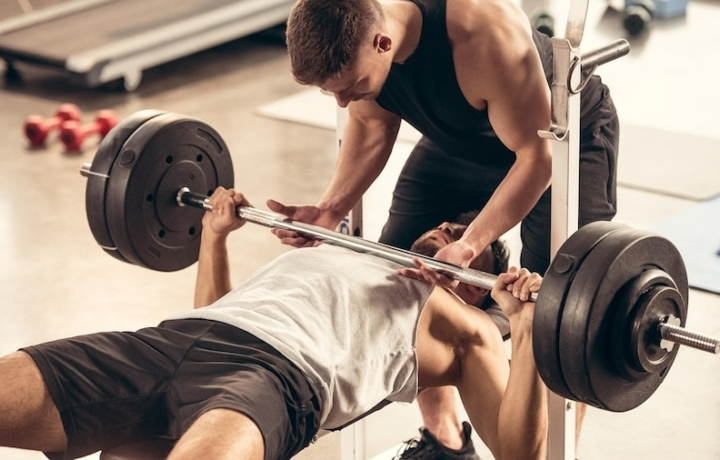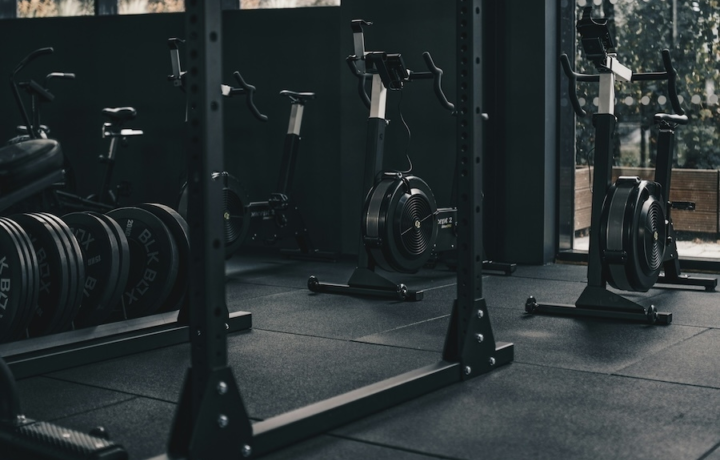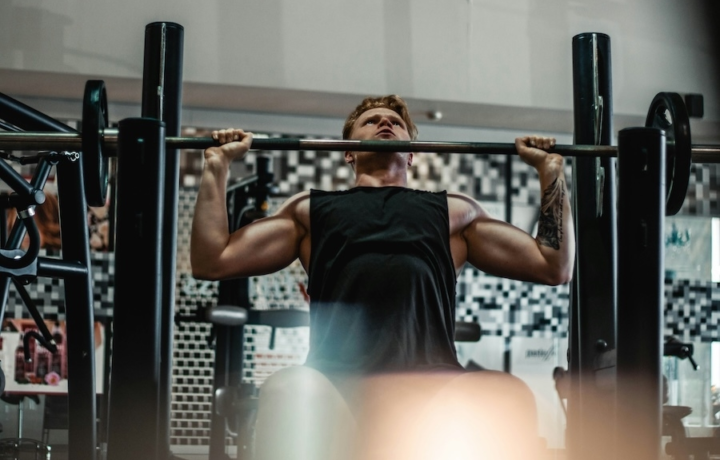Exercise
Standing Dumbbell Shoulder Press

Standing Dumbbell Shoulder Press
How to Perform
- Stand with feet shoulder-width apart, holding a dumbbell in each hand at shoulder height with palms facing forward and elbows bent at 90 degrees.
- Brace your core and maintain a neutral spine position, ensuring your shoulders are relaxed away from your ears.
- Exhale as you press the dumbbells overhead in a controlled motion, extending your arms until they're almost fully straight with a slight bend in the elbows.
- At the top position, your biceps should be close to your ears with wrists stacked directly over your shoulders and elbows.
- Pause briefly at the top while maintaining core engagement and avoiding arching your lower back.
- Inhale as you slowly lower the weights back to the starting position at shoulder level, controlling the descent.
- Keep your chest up and avoid leaning backward during the entire movement, particularly when pressing heavier weights.
- Maintain a stable lower body throughout the exercise, avoiding the temptation to use leg drive to assist the press.
Important information
- Keep your wrists neutral (not bent backward or forward) throughout the entire movement to prevent strain.
- Avoid locking out your elbows at the top of the movement to maintain tension on the shoulders and reduce joint stress.
- If you experience any shoulder pain, try the neutral grip variation (palms facing each other) which may be more comfortable for your shoulder joints.
- Make sure you can maintain proper posture without excessive back arching before increasing weight—form always takes priority over load.

Standing Dumbbell Shoulder Press
Exercise Details
Primary Muscles
Muscle Groups
Mechanic
Risk Areas
Built for progress
Take the guesswork out of training
Create personalized AI-powered workout plans that evolve with you. Train smarter, track every rep and keep moving forward, one workout at a time.






The Standing Dumbbell Shoulder Press stands as a cornerstone exercise for developing impressive shoulder definition and upper body strength. This intermediate movement primarily targets the front and side deltoids while engaging the triceps as secondary muscle groups, making it an efficient compound exercise for anyone looking to enhance their upper body aesthetics and functional power. When incorporated into bodybuilding routines, the Standing Dumbbell Shoulder Press helps create that coveted shoulder cap development and contributes to a balanced, V-tapered physique. The exercise allows for natural movement patterns that can minimize shoulder impingement compared to some barbell variations, making it both effective and joint-friendly for consistent training.
For those embracing HIIT workouts, this press can be seamlessly integrated with controlled tempo to elevate heart rate while building strength. The standing position engages the core muscles throughout the movement, adding an element of stability training that seated variations simply can't match. This full-body engagement makes it particularly valuable for athletes focused on developing functional strength that transfers to real-world activities. From a strength perspective, the Standing Dumbbell Shoulder Press offers unique benefits through its unilateral nature, helping to identify and correct muscle imbalances between the left and right sides.
Progressive overload with this exercise leads to substantial improvements in pushing power that carries over to numerous other upper body movements in your fitness repertoire. What makes this exercise particularly valuable is its versatility: it can be performed with various rep ranges to emphasize either hypertrophy or strength goals. The neutral grip option (palms facing each other) makes it accessible even for those with some shoulder mobility limitations, while the traditional grip provides maximum deltoid activation for experienced lifters seeking peak shoulder development.
FAQ - Standing Dumbbell Shoulder Press
The Standing Dumbbell Shoulder Press primarily targets the deltoid muscles (front and side), while also engaging the triceps as secondary movers and the core muscles for stabilization. The trapezius and serratus anterior also work as supporting muscle groups throughout the movement.
Yes, when performed with proper form, it's generally safer than barbell overhead presses as the dumbbells allow for a more natural range of motion. If you have existing shoulder issues, try the neutral grip variation (palms facing each other) which places less stress on the shoulder joint.
Include this exercise 1-2 times weekly, allowing 48-72 hours for shoulder recovery between sessions. For optimal results, incorporate it as a primary movement on your shoulder or push day within your training split.
The most common mistakes include rounding your lower back, rotating your hips instead of keeping them square, rushing through the movement, and not hinging properly at the hips. Focus on maintaining a neutral spine, moving with control, and keeping your standing knee slightly soft rather than locked.
To make it easier, use lighter weights, perform partial range of motion, or try the seated variation. To increase difficulty, use heavier dumbbells, slow down the eccentric (lowering) phase, add a pause at the bottom position, or progress to single-arm variations for greater core engagement.









